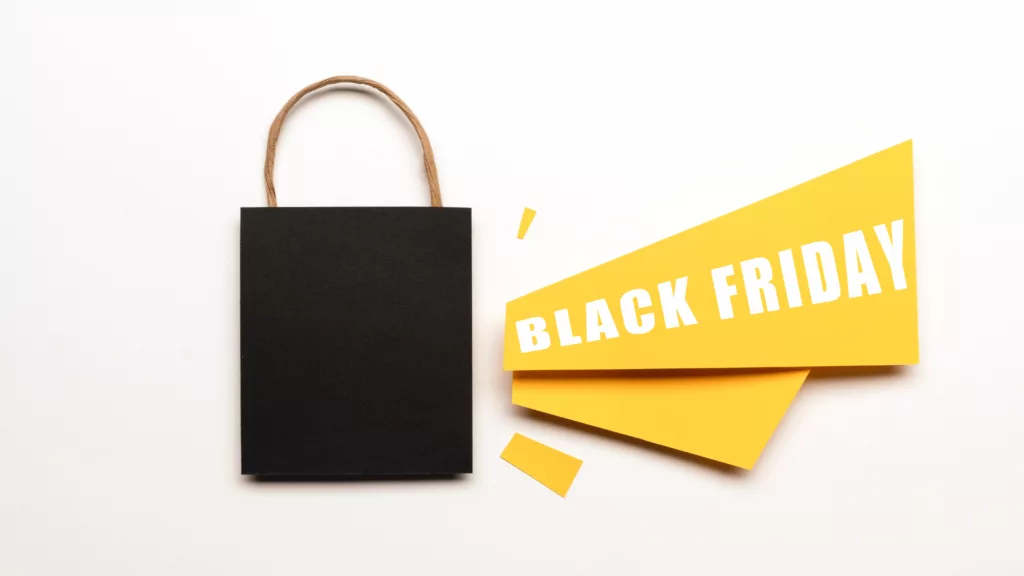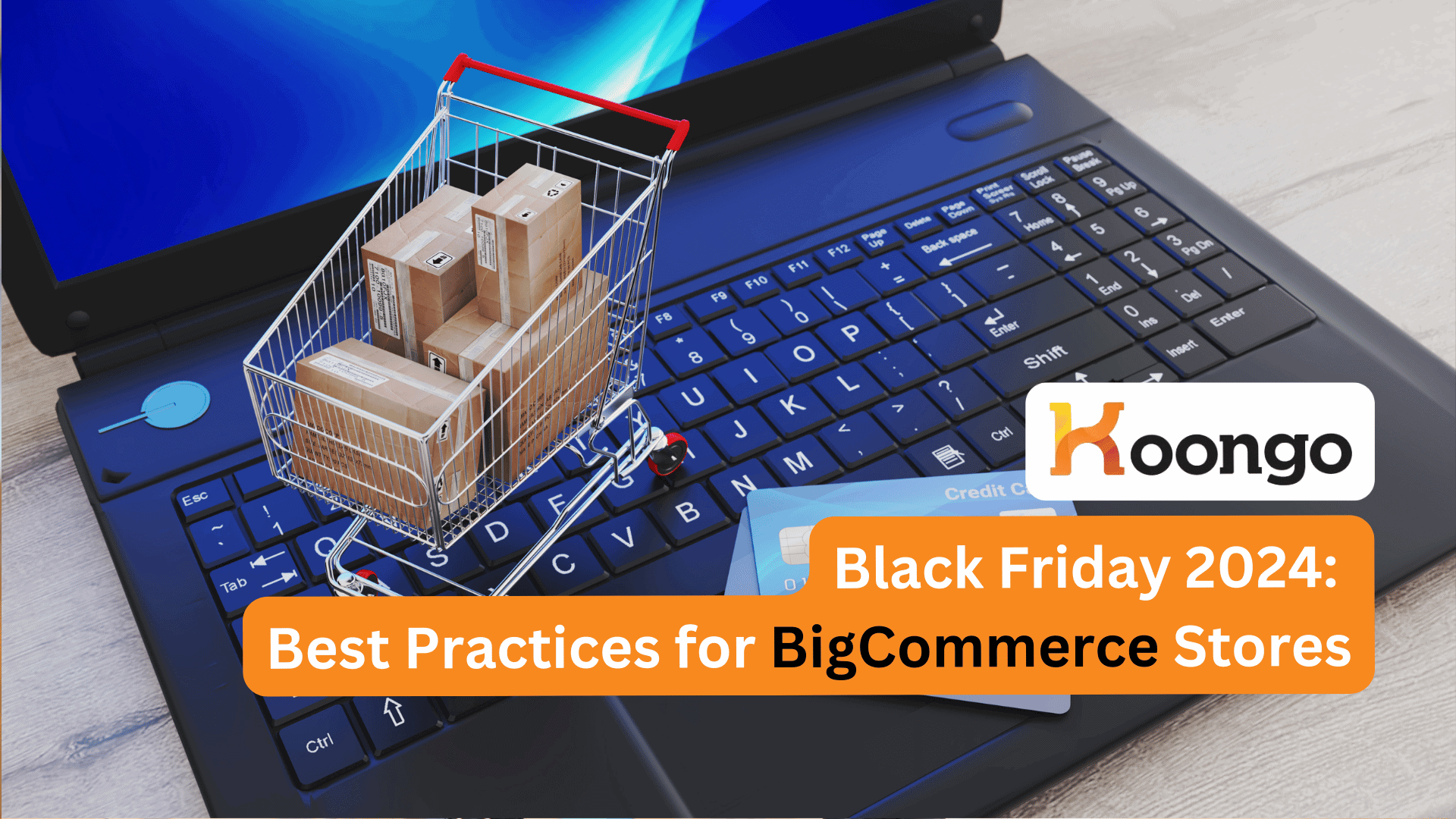Black Friday and Cyber Monday are pivotal for e-commerce success, especially for BigCommerce store owners. This guide provides actionable steps to prepare your store for BFCM 2024, covering performance optimization, inventory management, multi-channel selling, and checkout enhancements. Learn data-backed strategies, key metrics to monitor, and best practices for boosting sales and minimizing cart abandonment. Start early, analyze your results, and set your BigCommerce store up for record-breaking BFCM sales.

Why BFCM is Crucial for BigCommerce Stores
Black Friday and Cyber Monday are the most significant shopping events of the year, known for setting e-commerce sales records and driving intense competition among online retailers. For e-commerce businesses, BFCM represents a pivotal time to maximize revenue and capture new customers. In 2023, BFCM saw over $9.12 billion in U.S. online sales on Black Friday alone, demonstrating the unparalleled revenue potential during this period. Moreover, 58% of shoppers view BFCM as their main time for holiday purchases, highlighting the necessity for thorough preparation.
BigCommerce Advantage
BigCommerce stands out as an ideal platform for Black Frifay readiness due to its scalability and powerful built-in features. Its customizable tools and flexible integrations make it easier for merchants to handle surges in traffic, implement advanced promotions, and optimize checkout processes. With BigCommerce, store owners can leverage seamless performance, multi-channel selling, and extensive plugin options to outperform competitors and meet high customer expectations during BFCM.

Optimizing BigCommerce Store Performance for Black Friday
Why Performance Optimization Matters
The performance of your BigCommerce store plays a crucial role during Black Friday and Cyber Monday. Load times directly impact user experience and conversion rates. According to Google, 53% of visitors will abandon a site that takes more than 3 seconds to load. Additionally, Portent found that e-commerce sites that load within 1 second experience conversion rates 2.5 times higher than those taking 5 seconds. With high traffic volumes during BFCM, even minor performance lags can lead to lost sales and missed opportunities.
Actionable Tips for Speed Optimization
To ensure your BigCommerce store is ready for Black Friday traffic, focus on these optimization strategies:
Enable Caching: Use BigCommerce’s built-in Akamai Image Manager to enable caching and deliver images faster. This reduces server load and improves load times.
Optimize Images: High-quality images can slow down a site if not optimized. Compress images using BigCommerce’s built-in image optimization features or third-party tools like TinyPNG. This ensures faster page load times without sacrificing image quality.
Use a CDN: Implement a content delivery network (CDN) like Cloudflare or Fastly to distribute your site’s content globally. A CDN reduces latency and accelerates load times for international visitors, which is essential during global shopping events like BFCM.
Optimize Hosting Plan: Ensure your hosting solution can handle surges in traffic. BigCommerce’s cloud infrastructure supports high-traffic periods seamlessly, but consider scaling up your plan or enhancing bandwidth capabilities to maintain fast performance.

Inventory Management and Automation
Importance of Frequent Inventory Management
Accurate inventory management is critical during BFCM, where rapid sales spikes can lead to stockouts. According to Salesforce, 30% of shoppers abandon their purchases when products are out of stock. Overselling not only results in disappointed customers but also invites negative reviews and potential chargebacks, tarnishing your brand reputation.
Best Practices for Inventory Management
Integrate Inventory Management Tools: Incorporate third-party tools like SkuVault or Linnworks for comprehensive inventory tracking and management. These tools help sync stock levels in real-time, ensuring your listings reflect accurate availability.
Automate Inventory Updates Across Channels: Use platforms like Koongo to synchronize your BigCommerce inventory across multiple sales channels, including Amazon, eBay, and Facebook. This automation reduces manual errors and keeps your stock levels consistent across all platforms.
Set Low-Stock Alerts: Configure automatic alerts for low-stock items. This helps you proactively restock popular products and avoid missed sales opportunities due to unexpected demand surges.

Creating Effective BFCM Promotions
Data on Promotions and Consumer Behavior
Promotions are a proven driver of BFCM success. The National Retail Federation reports that 85% of shoppers cite discounts as the main reason for shopping during BFCM. Additionally, Shopify data shows that flash sales and exclusive deals can boost conversion rates by up to 35% during peak shopping periods.
Types of Effective BFCM Promotions
Time-Limited Discounts: Create urgency with exclusive, short-term deals. BigCommerce’s ‘Customer Groups’ feature allows you to target specific customer segments with these special promotions.
Bundle Offers and Upsells: Encourage customers to spend more by bundling complementary products. This strategy increases the average order value and helps move more inventory during BFCM.
VIP and Loyalty Discounts: Reward your repeat customers and loyalty program members with exclusive discounts. Personalized deals foster customer loyalty and can lead to repeat purchases beyond BFCM.
Setting Up Promotions in BigCommerce
Use Discount Rules: Leverage BigCommerce’s built-in ‘Discounts and Coupons’ feature to create tailored promotions. This tool allows for flexible discount structures, including percentage-based discounts, buy-one-get-one offers, and more.
Automate Start/End Times: Scheduling tools within BigCommerce can automate the start and end times of your promotions, ensuring that deals are executed seamlessly without manual intervention. This automation is vital for running flash sales and maintaining consistent pricing throughout the BFCM period.
By optimizing performance, automating inventory management, and executing effective promotions, BigCommerce store owners can maximize their impact during BFCM and drive significant sales growth.

Enhancing the Checkout Process for Conversions
Why a Streamlined Checkout Matters
During BFCM, simplifying the checkout process is essential for boosting conversions and minimizing cart abandonment. Research by the Baymard Institute shows that complex checkouts can push cart abandonment rates up to 70%. A seamless and user-friendly checkout experience can make a significant difference in converting visitors into customers. Additionally, optimizing your checkout is crucial during BFCM, as most consumers expect a quick and hassle-free experience.
A streamlined checkout experience can significantly boost your store’s conversion rates. For instance, businesses that simplified their checkout processes have seen a 35% increase in conversion rates. Furthermore, with mobile shopping on the rise, having a mobile-optimized checkout can be a game-changer. According to Adobe Analytics, 73% of BFCM purchases in 2023 were made on mobile devices, emphasizing the need for a responsive and mobile-friendly checkout.
Practical Tips for BigCommerce Checkout Optimization
Enable Guest Checkout: Require minimal steps for customers to complete their purchase. Forcing account creation can deter potential buyers, so enabling guest checkout can reduce friction and improve conversion rates. Baymard Institute notes that 24% of customers abandon their carts when required to create an account.
Add Express Payment Options: Integrate popular payment methods like Apple Pay, PayPal, and Google Pay. These payment gateways allow for faster checkouts, especially on mobile devices, leading to fewer abandoned carts and a smoother purchasing process. Studies show that offering express payment options can increase conversion rates by up to 12%.
Mobile Optimization: Ensure your checkout process is responsive and designed for mobile users. A poorly optimized mobile experience can result in lost sales, especially since mobile shopping now represents the majority of BFCM transactions. Optimize your layout, simplify form fields, and make buttons easily tappable to create an efficient mobile checkout process.

Multi-Channel Selling for Maximum Exposure
Why Multi-Channel Matters
Expanding your sales strategy beyond your BigCommerce store can significantly boost visibility and revenue. A report by Statista reveals that 73% of consumers shop across multiple channels before making a purchase. This means that to maximize your reach and sales during BFCM, you need to list your products on as many relevant channels as possible, including Amazon, eBay, Google Shopping, and popular social media platforms like Facebook and Instagram.
Multi-channel selling provides access to larger customer bases and helps you engage with shoppers who prefer different platforms. By diversifying your presence, you can also safeguard your revenue if one channel underperforms.
Steps to Set Up Multi-Channel Selling
Connect with Major Marketplaces: Listing products on platforms like Amazon, eBay, and Google Shopping is essential for increasing exposure. Start by creating accounts on these marketplaces and syncing your BigCommerce product catalog to ensure consistency.
Use Koongo for Integration: Koongo is an effective tool that allows BigCommerce merchants to manage product listings and synchronize inventory across multiple platforms from a single dashboard. This helps reduce manual errors and ensures that your stock levels remain accurate, preventing overselling or stockouts during BFCM.
Social Media Selling: Integrate your BigCommerce store with Facebook and Instagram to tap into social commerce opportunities. These platforms not only help you reach a broader audience but also provide targeted advertising features that can enhance your BFCM promotions.

Retarget BFCM Shoppers for Holiday Sales
Why Retargeting Works
The days and weeks following BFCM offer a prime opportunity to re-engage visitors who browsed your store or made a purchase during the shopping event. Wordstream reports that retargeting ads can achieve a 70% higher conversion rate than standard display ads. Retargeting helps you stay top-of-mind with shoppers, encouraging them to return for additional holiday shopping or to complete purchases they initially abandoned.
By leveraging retargeting, you can capitalize on your BFCM traffic, converting one-time shoppers into repeat customers and boosting your overall holiday sales.
Effective Retargeting Strategies for BigCommerce Stores
Remarketing Ads: Use Google Ads and Facebook Ads to retarget users who visited your store but didn’t complete a purchase. These platforms offer customizable retargeting options that allow you to display tailored ads to previous visitors, reminding them of products they viewed and promoting special holiday offers.
Email Retargeting Campaigns: Email marketing is a powerful tool for re-engagement. Set up automated email campaigns that send personalized follow-ups to customers who browsed or bought during BFCM. Include product recommendations, exclusive holiday discounts, and calls to action that entice them to return. According to HubSpot, personalized emails have an average open rate of 29%, making them an effective channel for post-BFCM engagement.
Product Recommendations: Use the data collected during BFCM to segment your audience and send personalized product recommendation emails. For example, if a customer purchased a particular item during BFCM, suggest complementary products or accessories in your follow-up communications. This targeted approach not only increases the likelihood of repeat sales but also enhances the customer experience.

Analyzing BFCM Performance and Planning for Next Year
Why Analysis is Crucial
Analyzing your BFCM performance is essential to understand what strategies were successful and what areas need improvement. This analysis allows you to fine-tune future campaigns and allocate resources more effectively. According to HubSpot, businesses that leverage data analysis see up to a 20% increase in marketing effectiveness. By evaluating how your BigCommerce store performed during BFCM, you can make data-driven decisions to enhance your strategy for the next year and beyond.
Key Metrics to Monitor
Sales and Revenue: Assess your total sales and average order value to gauge overall campaign performance. Comparing these figures to previous BFCM events can reveal growth trends and areas that need attention.
Traffic Sources: Determine which channels—social media, email marketing, paid ads, or organic search—brought in the most traffic and generated the highest conversions. According to Statista, multi-channel strategies contribute to a 14% increase in sales.
Cart Abandonment Rate: Analyze where customers dropped off during the checkout process. Baymard Institute states that the average cart abandonment rate is around 70%, so identifying and addressing these points can significantly boost your future sales.
Customer Retention: Check how many first-time BFCM buyers returned for subsequent purchases. According to Invesp, increasing customer retention by 5% can boost profits by up to 95%.
Recommended Tools for Data Analysis
Google Analytics: Integrate this powerful tool with your BigCommerce store to track detailed reports on traffic, user behavior, and conversion rates. Utilize segments to isolate BFCM data and compare it with previous years.
BigCommerce Analytics Dashboard: Use BigCommerce’s built-in analytics to get insights into customer behavior, product performance, and sales trends. This tool provides a quick overview of how different products and categories performed during BFCM.
Third-Party Tools: For more advanced reporting, consider using tools like Metorik or Klaviyo. These platforms can offer deeper insights into metrics like customer lifetime value, cohort analysis, and purchase frequency.

Maximize Your BigCommerce Store’s Black Friday Success
Recap of Key Strategies
Maximizing your BigCommerce store’s success during Black Friday requires a well-rounded strategy that includes optimizing site performance, managing inventory, crafting effective promotions, streamlining the checkout process, and leveraging multi-channel selling. Additionally, analyzing your performance post-BFCM helps fine-tune your approach for future campaigns. Each of these aspects is vital for staying competitive during the biggest shopping event of the year.
Start preparing for Black Friday 2024 early to ensure that your BigCommerce store is well-optimized and ready to handle increased traffic and sales. Use tools like Koongo for seamless multi-channel management, inventory syncing, and automated product listings. Begin your preparations now to maximize your revenue potential and create a smoother, more successful shopping experience for your customers.
Continue reading →
 EN
EN 
